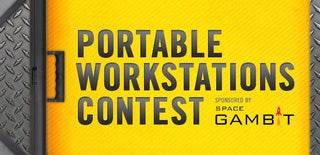Introduction: Transformable Extended Workbench Part 2
3. Increased area for sawing
Material:
1x Al plate dimensions 695 x 300 x 10
4 screws M6 x 60
4x wing nuts M6
When you look at stable saws they have a wide surface for processing. So I wanted to increase it.
I must say that I was arranging the workbench with material that was available at the time. It was emerged gradually, so I was using the machines I needed. And the workbench grew and grew. And when I added a circular saw, the real transformation began.
3.1.Extending the workbench to the right
In the case of the table, I drilled 4 holes Ø 8 mm for mounting screw M6. Why so
big? In order to ease the assembly, disassembly and positioning of the Al plate. I mounted panel with 4 M6 screws and wing nuts. It is possible to assembly and dismantling Al profiled plate very easily.
Step 1: 3.2. Extending the Workbench to the Left
3.2. Extending the workbench to the left
material:
2x profile of the board for the construction
2x profiled Al panel
6 x screws M8 x 30
6x wing nuts M8
8x screws M6 x 30
8 x M6 nut with washer
3.2.1. In the case of the table I drilled 3 holes Ø 9mm for fastening two profiles on each side.
Note: The position of the holes on the case should be previously thought trough. They shouldn't be in the welded rectangular profile and there must be enough space for the wing nut (assembly and disassembly).
When the profile is attached to the casing, place the Al plate on the profile. Mark the positions for the holes and drill 4 holes Ø 8 mm for M6 screws.
Note: The ideal profile for an extension would be 60 x 40 mm for mounting the wing nuts.
The figure shows the mounting of wing nuts. However, because there was no place for the installation, I had to use a standard nut M6 with washer.
The same procedure applies to other Al profiled plates.
Step 2: 3.3 . Extending Transversely to the Left
3.3 . Extending transversely to the left
material:
1x housing
2 x 20 x 40 x 2 mm, length 400 mm
4 x screw M6 x 60 mm
4 x screws M8 x 60
4 x wing nuts
2 x metal plate
2 x profile 20 x 40 mm
8 x screws M8 x 30 mm
Since there were available some upper parts of housings tables, I came up with the idea that I can use them. I sewed the original upper case (for extension) in half. I drilled 4 holes Ø 9 mm for fastening. In case of the table, I drilled 4 holes Ø 9 mm for fastening two angles. These profiles are used to attach the miter saws and for attaching extensions. Into the profiles I drilled 8 holes Ø 9 mm for fastening the two extensions.
The extension to the left has two metal plates. The lower one is fastened with four screws M6 x 60 mm in the casing extension .
The other is attached to a corner profile with four screws M6 x 40 mm . Profile is attached with screws M 4 x 6 x 30 mm case of the extension.
Note: Drill the holes 1 mm larger than the diameter of the screws for easier installation and fine positioning. Applies to all screws. I decided for mounting plates with nuts, because at the time I didn't need to rotate the plates. I will replace metal nuts with plastic wing nuts .
The extension must be attached on the case of the workbench with 4 screws M8 x M8 x 60 mm with plastic grub screws, to facilitate assembly and disassembly.
Step 3: 3.4. Extending Right Transverse
3.4. Extending right transverse
The same goes for the right side as in the left embodiment, only that there is a plate attached to the corner profile.
Note:
Extending the first half of the workbench is so complete and arrive at the second part of it.

Participated in the
Woodworking Contest

Participated in the
Portable Workstations Contest













